Business
Paul Almeida: My European Favourites in 5 – 4 – 3 – 2 – 1!

Salzburg, Austria by Paul Almeida
Salzburg is one of my favourite mid-sized cities in Europe and Austria’s fourth largest city, with only about 150,000 residents. Geographically, it lies at the foot of the Eastern Alps, close to the German border and is bisected by the Salzach River. The compact old town, with medieval and baroque architecture is classified as a UNESCO World Heritage Site and is easy to explore on foot. Salzburg is visited annually by millions of tourists from around the world and our Azorcan tour groups often list it as a favourite stop.

Salzburg, Austria
5 FUN FACTS
Salzburg literally means “Salt Fortress.” The reigning Prince-Archbishops, the city and the region became wealthy mainly from the salt mines in the area, trade and some gold mining. Don’t miss the opportunity to visit a salt mine in the area to learn more about the extraction of the “white gold.”
The 11th century Hohensalzburg is one of the largest and best preserved medieval fortresses in Europe. You can walk up the path to the fortress or you can take the Festungsbahn funicular railway located just off the Kapitelplatz. From the fortress, you can enjoy some of the best views of the city and the surrounding area.
Composer Wolfgang Amadeus Mozart was born on January 27, 1756 in Salzburg, and you can visit his birthplace which is also a museum. You can’t miss the bright yellow building at No. 9 Getreidegasse with “Mozart’s Gebursthaus” in gold letters on the façade. The Getreidegasse is a pedestrian street with shops and restaurants. The ornamental wrought iron signs on the building facades harken back to medieval times. The Schlosserei Wieber shop on the Getreidegasse is a traditional metalworking shop that also continues to make these signs. The city celebrates Mozart Week festival in January around his birthday. A friend once joked that “Mozart was my favourite composer, now he’s my favourite decomposer.”

Hohensalzburg Fortress, Mozart’s Gebursthaus and the metal signs on the Getreidegasse
The famous Salzburg Festival, established in 1920 and which features some of Mozart’s works, is held each summer for five weeks starting in late July. With approximately two hundred drama, concert, and opera events and a quarter of a million visitors, it is a huge undertaking and an important driver of the local economy. The festival celebrated its 200th anniversary in 2020 but unfortunately plans had to be scaled back due to the corona virus pandemic.
The Rodgers and Hammerstein musical, “The Sound of Music,” about the Von Trapp family was set in Salzburg and movie fans love to search out film locations in the city.
Some of the most popular places to seek out are St. Peter’s cemetery, the Mirabell Palace and gardens with the Pegasus fountain, the Horse Pond, the Residence Square with it’s baroque fountain, Schloss Leopoldskron and the Nonnberg Abbey. The Rock Riding School, which was initially built to be a cathedral but was changed to a riding school by the Prince-Archbishop, later became Salzburg’s favourite concert venue. This is where the real Von Trapp family won the 1936 Salzburg Music Festival. There are other film locations located in the surrounding areas and there are tours that focus on the Von Trapp’s and the movie.

Mirabell Gardens, Makartsteg Bridge and the view of the old town from the Mochsberg
4 POINTS OF INTEREST
A walking tour of Salzburg usually starts at the Mirabell Palace gardens. The Palace was built by a Prince-Archbishop in 1606 and has a grand marble hall that is popular for weddings. The view from the palace’s gardens to the Hohensalzburg fortress in the summer when the geometrically laid flowers are in bloom is amazing. The Grand Fountain in the centre of the garden with four mythological statues representing the elements (Fire, Air, Earth, Water), the Dwarf Garden, and the Pegasus Fountain are popular photo stops. The best way to cross the Salzach river to the old town from the Mirabell gardens is the pedestrian Makartsteg Bridge which is usually adorned with numerous “love locks.” The locks are inscribed with the lovers initials, attached to the fencing and the key thrown into the Salzach.
As you cross the river to the old town (Altstadt), go to the right and you will find the Monchsberg lift which takes you up to the Museum of Modern Art (Museum der Moderne). The café at the museum is a great place to have a cappuccino and cheese strudel as you admire the view of the old town. The Monchsberg, which was named after the Benedictine monks, is one of five mountains or hills in Salzburg. The Monchsberg plateau has a hiking path through the forest that you can take and enjoy scenic views all the way to the Hohensalzburg fortress. The city has a mountain inspector’s office (Bergputzer) to check the mountain for possible falling rocks. In 1669, an avalanche of rock landed on the city below and killed over 200 people.
On the University Square (Universitatplatz), you will find the Grünmarkt or green
Market that goes back to the 18th century. The farmers market still has vendors selling fruit, vegetables, cheeses, meats, breads and pastries. It’s a great place to sample local products, or grab a quick lunch or a pretzel. The Kollegienkirche or University church dominates the square, and there are several historic buildings surrounding the lively square.

Pretzel kiosk on University Square, Residence Square and the Salzburg Cathedral>
A short walk from the University Square will take you past the Alter Markt square with the St. Florian Fountain and into the expansive Residence Square (Residenzplatz). The square has a magnificent baroque fountain decorated with four horses snorting water, giants, dolphins and a triton. Here is where you can find horse drawn carriages to enjoy the city centre at a leisurely pace. The Residence museum on the square is a testament to the immense wealth and political power of the Prince-Archbishop’s of Salzburg. The lavish state rooms and painting collection make it a top attraction. The 17th century baroque Salzburg Cathedral or Dom on the square is connected to the Residence. The Cathedral has religious relics of St. Rupert, an impressive pipe organ, plus an ornate ceiling and dome. The baptismal font is the same one used to baptize Mozart.
3 INTERESTING ACTIVITIES
To fully understand the significance of salt to the fortunes of Salzburg take a short trip to the Salzbergwerk Dürrnberg, which is located on the Dürrnberg above the town of Hallein. After supplying you with miner’s overalls, you will go by rail deep into the mountain where you will walk through the tunnels, go down two long slides and take a raft trip across an underground salt lake. The very informative tour explains the history of the mine from the age of the Celts to modern mining methods. After the tour be sure to visit the SALINA Celtic village to see how life was 2,600 years ago.
The Red Bull Hanger 7 at the Salzburg Airport is an impressive glass structure that houses the Flying Bulls historical airplane and helicopter fleet plus a collection of Formula 1 race cars. Austrian Red Bull founder and billionaire Dietrich Mateschitz is the owner of the hanger and the collection. If you like cars or planes, this is a must stop when you visit Salzburg or have a layover at the airport.

Going into the Salt Mine, a Red Bull concept race car and inside the Hanger 7
The imposing 900 year old medieval Hohenwerfen Castle, surrounded by the Berchtesgaden Alps, is located about 40 km south of Salzburg and overlooks the town of Werfen. A funicular takes you from the parking area up to the castle’s interior courtyard. The castle has an extensive weapons exhibit. The main event is a birds of prey demonstration from the Salzburg Falconry Center in the exterior courtyard with falcons, kites, vultures, and eagles. Some of these birds are huge and have no problem walking amongst the spectators. Be sure to check the daily times of the demonstrations in advance.

The impressive Hohenwerfen Castle, the courtyard and a large eagle
2 LOCAL DISHES TO ORDER
Tafelspitz is a popular Austrian dish of veal and vegetables that is simmered slowly. The broth is served separately as a first course then the veal and root vegetables are accompanied by apple-horsradish and chives.
Salzburger Nockerl was invented in Salzburg in the 17th century. Nockerl are vanilla flavoured dumplings dusted with powdered sugar and served with fruit jams or sauces. The warm dumplings arrive in three mounds to represent the three hills that surround Salzburg.

A Salzburger Nockerl, the Augustiner Brewery and their beer gardens
1 BEVERAGE TO ENJOY
There are eleven breweries in Salzburg, and the city is known as Austria’s beer capital. The Stiegl brewery has been privately owned since 1492. The Stieglkeller, located below the Hohensalzburg fortress, is a restaurant and beer garden that offers great views of the old town.
Established in 1621, the Augustiner Brau brewery and tavern is the biggest in Austria with indoor seating and a beer garden. In addition to great beer, you can purchase traditional dishes from food stands located inside the hall or the brewery.
Salzburg is a university town and has a lively café, beer garden and nightlife scene.
In addition to Mozart Week and the Salzburg Music Festival locals celebrate Fasching, Easter and harvest festivals. Salzburg’s Christmas markets are very popular and some shops in the old town specialize in Christmas.
Paul Almeida is the President of Azorcan Global Sport, School and Sightseeing tours and his company has taken thousands of people to Europe on custom group tours since 1994.
Visit azorcan.net to see all our custom group tour possibilities and to see our signature sport, sightseeing and sport fan tours individuals can now join.
Check out our newsletters, and listen to our podcasts at azorcan.net/media
Images compliments of Paul Almeida and Azorcan Tours.
Read more on Todayville.
Banks
Debanking Is Real, And It’s Coming For You
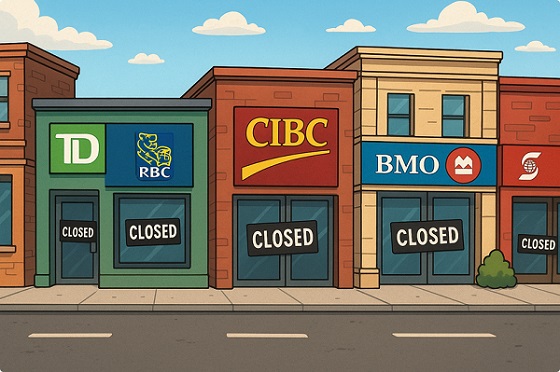
From the Frontier Centre for Public Policy
Marco Navarro-Genie warns that debanking is turning into Ottawa’s weapon of choice to silence dissent, and only the provinces can step in to protect Canadians.
Disagree with the establishment and you risk losing your bank account
What looked like a narrow, post-convoy overreach has morphed into something much broader—and far more disturbing. Debanking isn’t a policy misfire. It’s turning into a systemic method of silencing dissent—not just in Canada, but across the Western world.
Across Canada, the U.S. and the U.K., people are being cut off from basic financial services not because they’ve broken any laws, but because they hold views or support causes the establishment disfavors. When I contacted Eva Chipiuk after RBC quietly shut down her account, she confirmed what others had only whispered: this is happening to a lot of people.
This abusive form of financial blacklisting is deep, deliberate and dangerous. In the U.K., Nigel Farage, leader of Reform UK and no stranger to controversy, was debanked under the fig leaf of financial justification. Internal memos later revealed the real reason: he was deemed a reputational risk. Cue the backlash, and by 2025, the bank was forced into a settlement complete with an apology and compensation. But the message had already been sent.
That message didn’t stay confined to Britain. And let’s not pretend it’s just private institutions playing favourites. Even in Alberta—where one might hope for a little more institutional backbone—Tamara Lich was denied an appointment to open an account at ATB Financial. That’s Alberta’s own Crown bank. If you think provincial ownership protects citizens from political interference, think again.
Fortunately, not every institution has lost its nerve. Bow Valley Credit Union, a smaller but principled operation, has taken a clear stance: it won’t debank Albertans over their political views or affiliations. In an era of bureaucratic cowardice, Bow Valley is acting like a credit union should: protective of its members and refreshingly unapologetic about it.
South of the border, things are shifting. On Aug. 7, 2025, U.S. President Donald Trump signed an executive order titled “Guaranteeing Fair Banking for All Americans.” The order prohibits financial institutions from denying service based on political affiliation, religion or other lawful activity. It also instructs U.S. regulators to scrap the squishy concept of “reputational risk”—the bureaucratic smoke screen used to justify debanking—and mandates a review of past decisions. Cases involving ideological bias must now be referred to the Department of Justice.
This isn’t just paperwork. It’s a blunt declaration: access to banking is a civil right. From now on, in the U.S., politically motivated debanking comes with consequences.
Of course, it’s not perfect. Critics were quick to notice that the order conveniently omits platforms like PayPal and other payment processors—companies that have been quietly normalizing debanking for over a decade. These are the folks who love vague “acceptable use” policies and ideological red lines that shift with the political winds. Their absence from the order raises more than a few eyebrows.
And the same goes for another set of financial gatekeepers hiding in plain sight. Credit card networks like Visa, American Express and Mastercard have become powerful, unaccountable referees, denying service to individuals and organizations labelled “controversial” for reasons that often boil down to politics.
If these players aren’t explicitly reined in, banks might play by the new rules while the rest of the financial ecosystem keeps enforcing ideological conformity by other means.
If access to money is a civil right, then that right must be protected across the entire payments system—not just at your local branch.
While the U.S. is attempting to shield its citizens from ideological discrimination, there is a noticeable silence in Canada. Not a word of concern from the government benches—or the opposition. The political class is united, apparently, in its indifference.
If Ottawa won’t act, provinces must. That makes things especially urgent for Alberta and Saskatchewan. These are the provinces where dissent from Ottawa’s policies is most common—and where citizens are most likely to face politically motivated financial retaliation.
But they’re not powerless. Both provinces boast robust credit union systems. Alberta even owns ATB Financial, a Crown bank originally created to protect Albertans from central Canadian interference. But ownership without political will is just branding.
If Alberta and Saskatchewan are serious about defending civil liberties, they should act now. They can legislate protections that prohibit financial blacklisting based on political affiliation or lawful advocacy. They can require due process before any account is frozen. They can strip “reputational risk” from the rulebooks and make it clear to Ottawa: using banks to punish dissenters won’t fly here.
Because once governments—or corporations doing their bidding—can cut off your access to money for holding the wrong opinion, democracy isn’t just threatened.
It’s already broken.
Marco Navarro-Genie is vice-president of research at the Frontier Centre for Public Policy and co-author, with Barry Cooper, of Canada’s COVID: The Story of a Pandemic Moral Panic (2023).
Business
Carney engaging in Orwellian doublethink with federal budget rhetoric

From the Fraser Institute
By Jake Fuss
In George Orwell’s classic 1984, he describes a dystopian world dominated by “doublethink”—instances whereby people hold two contradictory beliefs simultaneously while accepting them both. In recent comments about the upcoming October federal budget, Prime Minister Carney unfortunately offered a prime example of doublethink in action.
During a press conference, Carney was critical of his predecessor’s mismanagement of federal finances, specifically unsustainable increases in spending year after year, and stated his 2025 budget will instead focus on “both austerity and investments.” This should strike Canadians as an obvious contradiction. Austerity involves lowering government spending while investing refers to the exact opposite.
Such doublethink may make for good political rhetoric, but it only muddies the waters on the actual direction of fiscal policy in Ottawa. The government can either cut overall spending to try to get a handle on federal finances and reduce the role of Ottawa in the economy, or it can increase spending (but call it “investment”) to continue the spending policies of the Trudeau government. It can’t do both. It must pick a lane when it comes to mutually exclusive policies.
Despite the smoke and mirrors on display during his press junket, the prime minister appears poised to be a bigger spender and borrower than Trudeau. Late last year, the Trudeau government indicated it planned to grow program spending from $504.1 billion in 2025/26 to $547.8 billion by 2028/29.
After becoming the Liberal Party leader earlier this year, Carney delivered a party platform that pledged to increase spending to roughly $533.3 billion this year, well above what the Trudeau government planned last fall, and then to $566.4 billion by 2028/29. Following the election, he then announced plans to significantly increase military spending.
While the prime minister has touted a plan to find “ambitious savings” in the operating budget through a so-called “comprehensive expenditure review,” his government is excluding more than half of all federal spending including transfers to individuals such as Old Age Security and transfers to the provinces for health care and other social programs. Even with the savings anticipated following the review, the Carney government will likely not reduce overall spending but rather simply slow the pace of annual spending increases.
Moreover, the Liberal Party platform shows the government expects to borrow $224.8 billion—$93.4 billion more than Trudeau planned to borrow. And that’s before the new military spending. That’s not austerity—even if Prime Minister Carney truly believes it to be.
Actual austerity would require a decrease in year-over-year expenses, smaller deficits than what the Trudeau government planned, and a path back to a true balanced budget in a reasonable timeframe. Instead, Carney will almost certainly hike overall spending each year, raise the deficits compared to his predecessor, and could even fall short of his tepid goal of balancing the operating budget within three years (which would still involve tens of billions more borrowed in a separate capital budget).
While budgets normally provide clarity on a government’s spending, taxing, and borrowing expect more doublethink from the October budget that will tout the government’s austerity measures while increasing spending and borrowing via “investments.”
-
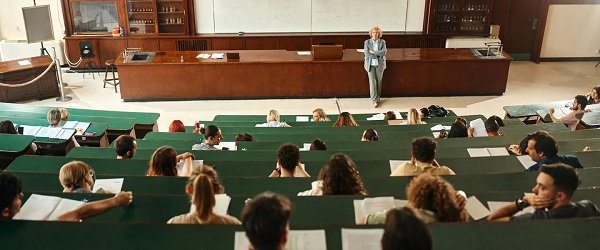
 Censorship Industrial Complex16 hours ago
Censorship Industrial Complex16 hours agoFreedom of speech under threat on university campuses in Canada
-
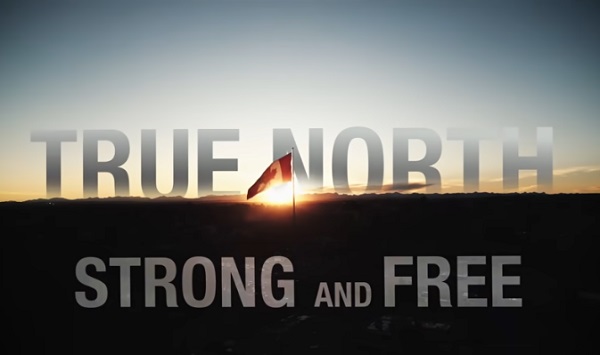
 Alberta11 hours ago
Alberta11 hours agoOttawa’s destructive federal energy policies and Premier Danielle Smith’s three part solution
-

 Business16 hours ago
Business16 hours agoCarney engaging in Orwellian doublethink with federal budget rhetoric
-
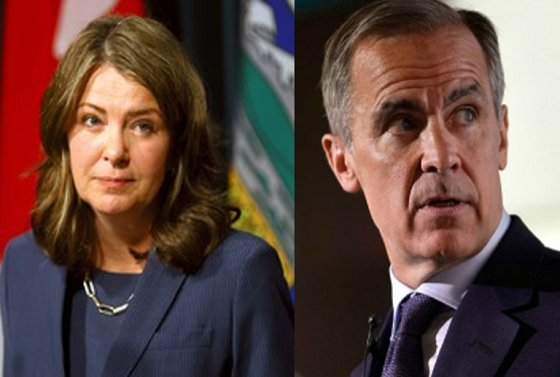
 Alberta16 hours ago
Alberta16 hours agoIs Alberta getting ripped off by Ottawa? The numbers say yes
-
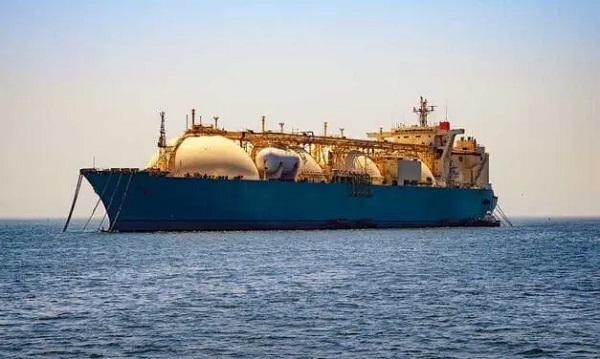
 Energy16 hours ago
Energy16 hours agoCanada’s LNG breakthrough must be just the beginning
-

 Business17 hours ago
Business17 hours agoCourt’s ‘Aboriginal title’ ruling further damages B.C.’s investment climate
-

 Business17 hours ago
Business17 hours agoManitoba Must Act Now To Develop Its Northern Ports
-

 Agriculture10 hours ago
Agriculture10 hours agoIn the USA, Food Trumps Green Energy, Wind And Solar





